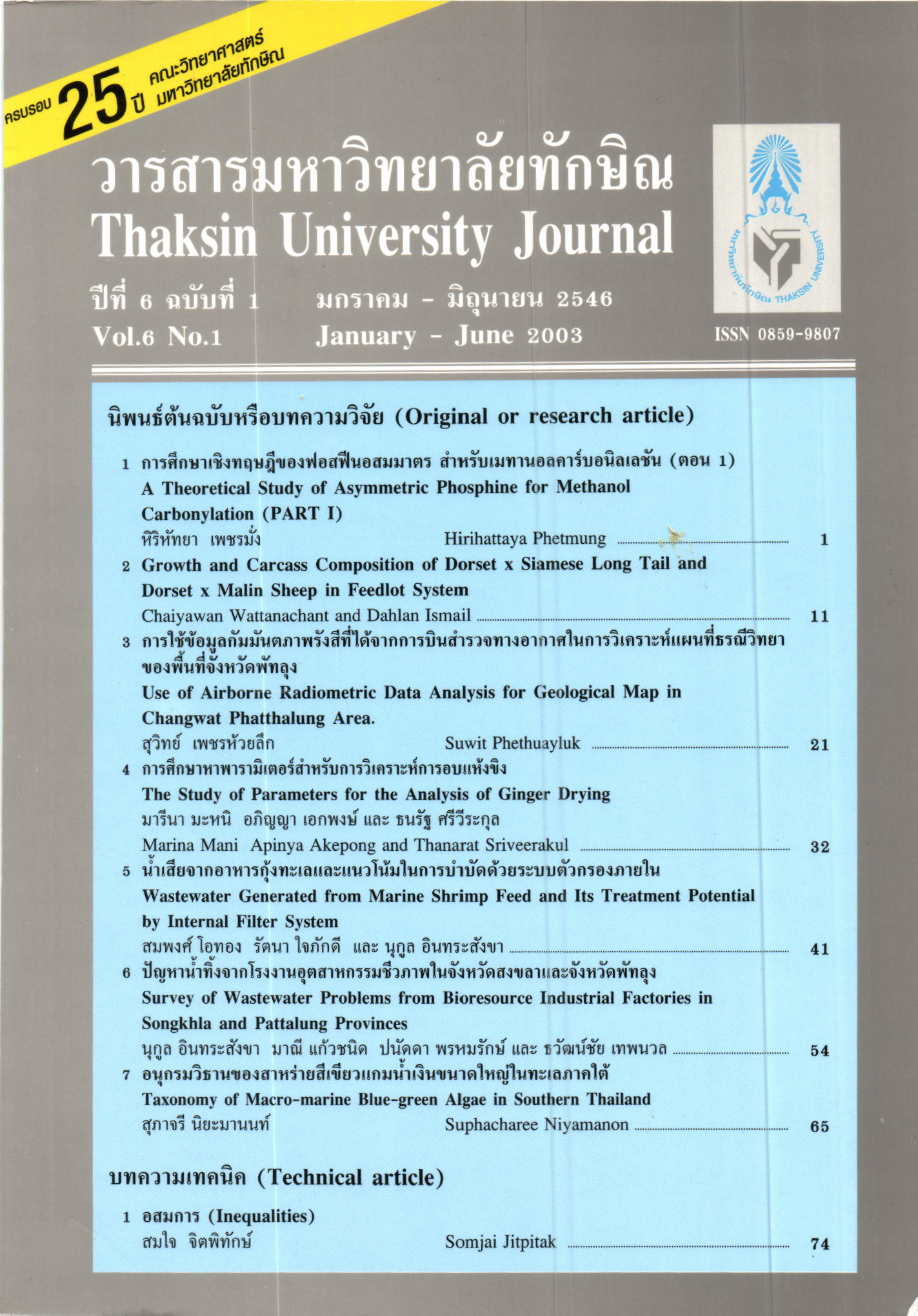ปัญหาน้ำทิ้งจากโรงงานอุตสาหกรรมชีวภาพในจังหวัดสงขลาและพัทลุง
Main Article Content
Abstract
This study is aimed at the problenrs arising lrom bioresource industry in two provinces in Southetn Thailand, namely, Songkhla and Pattalun[], during 2000. Initially, it was found thal this industry has ir major proportion up t\\ 62% arnong overall industries. Up to alq" of the bioresourcc industry is rice nrll industry. Somc industries havc caused cnvi.ronmental problems in two provinccs, nluncly, sealbod processing industry and rubbcr latex industry. The prcliminary investigation of the eflluents discharged tiom their wastewatcr treatment plants was conducted from 3 tactorics, i.e. Sealbod canning (Factory At ), Seafood processing (Factory B1) and Rubber latex processing (Factory Cl). It was found that the Biochemicll Oxygen Demand (BOD) from their discharges was still bclow the limit ol the govcrnmental guidelines. Howevcr, the nutrient levels (both Nitrogen and Phosphorus) in their effluents were remarkably high rn three factories. It was very obvious that high nutrient levels waslewatcr cal] cause eutrophication problens in the natural receiving waterways which mean thc overgrowth of aquatic plants nd sclweed are occurring. ln addition, bacreriological quality results of thesc three lactorics were also lbund in high levels ol faecrtl indicating bactcria, namely coliform bactcria especially from Factory A1. The survcy of the incidence of operational problems in b Activalcd sludge treatrncnt plants liom the bioresourcc industry was also conducted in Songkhla province. These factories wcre all seatbod industrics. lt u'as tbund that Factories B2 and E were encountering the sludge bulking and fbaming problems, which cffected thc quality of thcir ellluents. The identification of filamentous bacteria in lhe activated sludge were tbund in a majority of Norcardia spp and Microtfuix parvicclla which mostly cause thc bulking and lbaming problems.
Article Details
Section
Research Articles


